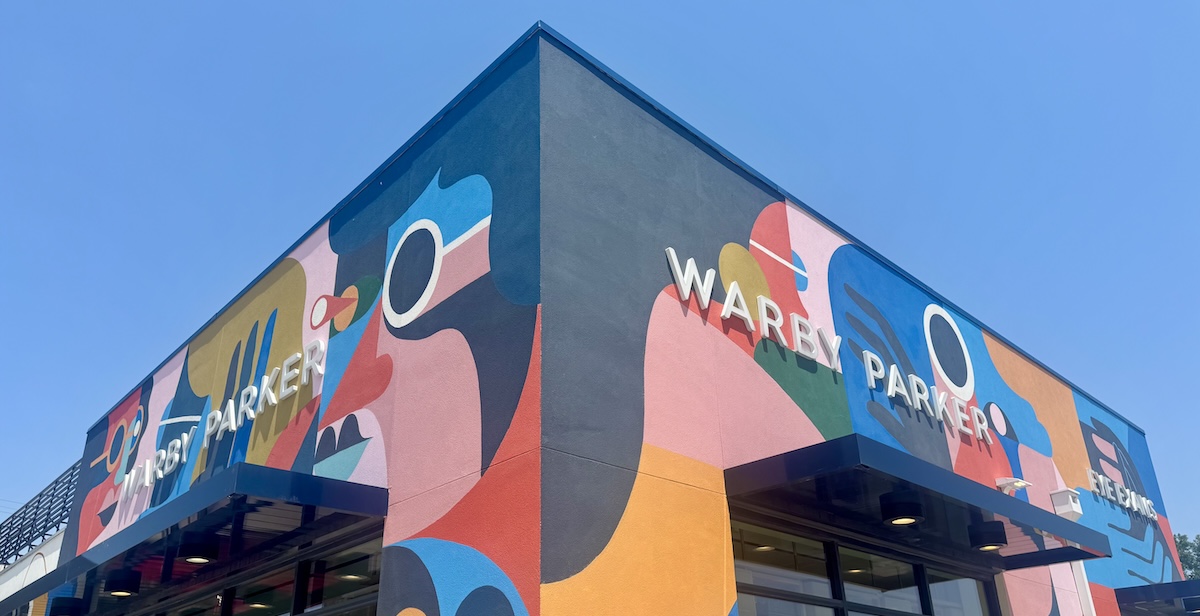Why Warby Parker and Amazon killed home try-on

The end may be near for at-home try-on programs.
Warby Parker, the eyewear brand that helped pioneer online glasses sales in the 2010s, said last Thursday on its quarterly earnings call that it would end its home try-on program by the end of the year. For years, the service — allowing customers to try out five glasses at home for five days — defined Warby Parker.
This is one of two major examples this year of companies discontinuing at-home try-on in favor of testing apparel virtually or in person. Warby Parker follows Amazon, which in January ended its “try before you buy” service that sent Prime members up to six clothing items, shoes and accessories at a time to try before completing a purchase, according to the Associated Press. Customers were able to return any unwanted items without being charged within seven days.
“It was a risk-free way for people to engage in research and discovery, and it was a huge loyalty driver for the brand,” Minkow said. “They didn’t have a brick-and-mortar presence to lean on, so it was all consumers could really do in order to engage with them risk-free and be sure they liked their products.”
In place of home try-on, Warby Parker is choosing to focus on reaching customers in person or through virtual try-on. Warby Parker also just launched an AI-powered virtual adviser to help people find the right glasses based on facial dimensions and style preferences. Meanwhile, an Amazon spokesperson, in a statement per the Associated Press, cited its program’s limited number of items and the growing usage of AI-powered sizing recommendations and virtual try-on. Customers are still able to get free returns on some apparel products, though Amazon’s website says products must be returned in new and unworn condition.
For Warby Parker, its growing store presence was also key to the decision. The company said most of its recent home try-on users live within 30 minutes of one of Warby Parker’s 300 stores, according to Retail Dive. Additionally, the company plans to open five shop-in-shop stores within Target locations.
“I think that they’ve opened enough brick-and-mortar stores that they know consumers will just go into those physical spots if they really want to be trying stuff on in real time,” Minkow said. “I also do think most virtual try-on tools for eyewear have gotten so good that those kind of seal the deal just as well as being in a brick-and-mortar store.”
DeAnn Campbell, a retail consultant for AAG Consulting who specializes in store operations, said this is the right time for Warby Parker to discontinue the service as the company reached net profitability for the first time as a public company in the first quarter, and as the company has a big enough store footprint and a good virtual try-on service.
“What really impresses me is how on the ball they are, as far as evolving with the technology,” Campbell said, adding that virtual try-on has expanded to all of Warby Parker’s frames and that she believes it now looks as if someone is actually wearing the glasses. Earlier on, Campbell said the experience was clunkier and limited to five frames. “The minute the [virtual try-on] technology improved and they reached a certain amount of consumer use, they discontinued an obsolete service.”
Campbell estimates the company is saving almost $100 million per year by discontinuing the service, based on the company’s volume of users and average shipping costs.
“They’ve been very successful in building revenue, but they haven’t actually been in the black until this year,” Campbell said. “They’ve been doing that by opening physical stores, getting people to come in instead of having to ship everything, and slowly building that physical presence to reduce their operational cost and to streamline their shipping costs and their supply costs.”
She said the store is far more effective at immersing customers in the brand, making customers look at their signage and giving the company the ability to upsell customers on products such as sunglasses, contact lenses or bifocals.
Jason Goldberg, chief commerce strategy officer for Publicis Groupe, expects virtual try-on to continue to improve. He said Google’s new feature that allows people to virtually try on clothing using an image of themselves — which launched in July — is especially leading the charge, reducing the need for customers to return items or for retailers to ship out products for people to test.
“Anything retailers can do to increase the keep rate and sell the right size in the first place is a significant financial opportunity for apparel retailers, and so, this is all super interesting technology that a bunch of retailers are leaning into,” Goldberg said. “But I would argue it’s only been in the last year that the state of technology has really made that a viable, practical solution.”

